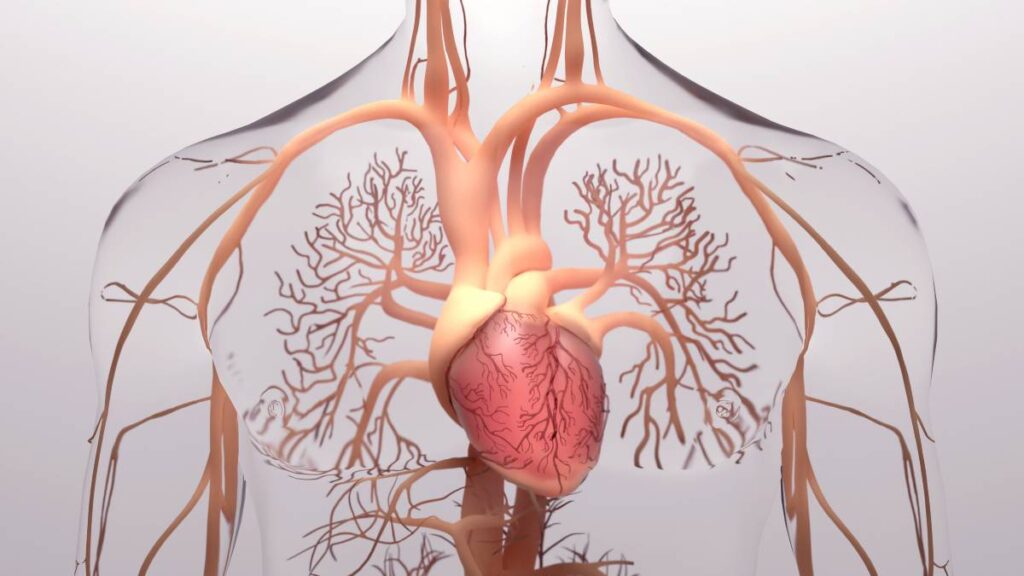Pulmonary hypertension (PH) is a condition that causes high blood pressure in the arteries of the lungs. While the signs and symptoms of PH can be nonspecific, patients usually present with shortness of breath and fatigue, which progressively worsen over time until right-sided heart failure develops. Changes in respiratory and cardiovascular stability in pulmonary hypertension necessitate unique considerations for anesthesia and surgery.
Diagnosis of pulmonary hypertension is often delayed because symptoms are frequently misattributed to aging, deconditioning, or other conditions. Consequently, PH is often not suspected until symptoms become severe or serious. It is estimated that more than 20 percent of patients experience PH symptoms for over two years before it is diagnosed. Common symptoms include: 1) dyspnea and fatigue, 2) exertional chest pain, 3) exertional syncope, 4) weight gain from edema, 5) abdominal pain and swelling, and 6) cough, hemoptysis, and hoarseness (less common).
Patients with PH are classified into five groups—referred to as “WHO Groups” because of the World Health Organization’s defining of them—based on etiology and mechanism. WHO Group 1 refers to pulmonary arterial hypertension, caused by the arteries in the lungs becoming narrowed, thickened, or stiff. WHO Group 2 includes PH due to left heart disease, where there are issues with how the heart squeezes or relaxes, or with the valves on the left side of the heart. WHO Group 3 includes PH due to chronic lung disease and/or low oxygen levels. WHO Group 4 occurs when the body cannot dissolve a blood clot in the lungs, leading to scar tissue in pulmonary blood vessels, which blocks normal blood flow and forces the right side of the heart to work harder. WHO Group 5 involves PH secondary to other diseases, including sarcoidosis, sickle cell anemia, chronic hemolytic anemia, and splenectomy.
Pulmonary hypertension and right-sided heart failure present unique challenges for anesthesia and surgery and increase the risk of perioperative mortality and morbidity. Multidisciplinary planning before surgery is essential due to the heightened perioperative risk in this population. The anesthesiologist should consult with the treating physicians (e.g., cardiologist or pulmonologist) and the surgeon to ensure careful consideration of the surgery’s indications and benefits, discuss potential risks with the patient, and achieve preoperative hemodynamic optimization.
Anesthesia management goals for patients with pulmonary hypertension include avoiding factors that increase baseline pulmonary vascular resistance, maintaining optimal preload levels without causing fluid overload, and maximizing right ventricular (RV) oxygen supply while minimizing RV oxygen demand. Since the failing RV is highly sensitive to afterload, a key goal is to keep pulmonary arterial pressure as low as possible to maintain forward flow and minimize workload on the right side of the heart.
In patients with PH, open surgical approaches are generally preferred over laparoscopic ones. The potential adverse effects of laparoscopy, such as hypercarbia from CO2 insufflation, hypoxemia, and increased risk of venous embolization, often outweigh its benefits. Additionally, laparoscopic procedures can reduce RV preload and increase RV afterload due to pneumoperitoneum and Trendelenburg positioning, complicating hemodynamic monitoring and potentially prolonging surgery duration compared to open procedures.
In the immediate postoperative period, managing pain, preload, heart rate, systemic blood pressure, ventilation, and temperature is crucial. The patient’s regular treatment regimen for pulmonary hypertension should be resumed as soon as possible after anesthesia and surgery. For instance, oral agents like sildenafil can be restarted once the patient is hemodynamically stable and able to tolerate oral intake, or intravenous sildenafil can be administered if oral medications are not an option.
Overall, PH is a condition characterized by high blood pressure in the lung arteries and requires careful anesthesia management due to increased risk of mortality and morbidity in the perioperative period.
References
Frost A, Badesch D, Gibbs JSR, Gopalan D, Khanna D, Manes A, Oudiz R, Satoh T, Torres F, Torbicki A. Diagnosis of pulmonary hypertension. Eur Respir J. 2019 Jan 24;53(1):1801904. doi: 10.1183/13993003.01904-2018. PMID: 30545972; PMCID: PMC6351333.
Braganza M, Shaw J, Solverson K, Vis D, Janovcik J, Varughese RA, Thakrar MV, Hirani N, Helmersen D, Weatherald J. A Prospective Evaluation of the Diagnostic Accuracy of the Physical Examination for Pulmonary Hypertension. Chest. 2019 May;155(5):982-990. doi: 10.1016/j.chest.2019.01.035. Epub 2019 Feb 28. PMID: 30826305.
Brown LM, Chen H, Halpern S, Taichman D, McGoon MD, Farber HW, Frost AE, Liou TG, Turner M, Feldkircher K, Miller DP, Elliott CG. Delay in recognition of pulmonary arterial hypertension: factors identified from the REVEAL Registry. Chest. 2011 Jul;140(1):19-26. doi: 10.1378/chest.10-1166. Epub 2011 Mar 10. PMID: 21393391; PMCID: PMC3198486.
Runo JR, Loyd JE. Primary pulmonary hypertension. Lancet. 2003 May 3;361(9368):1533-44. doi: 10.1016/S0140-6736(03)13167-4. PMID: 12737878.
Peacock AJ. Primary pulmonary hypertension. Thorax. 1999 Dec;54(12):1107-18. doi: 10.1136/thx.54.12.1107. Erratum in: Thorax 2000 Mar;55(3):254. PMID: 10567632; PMCID: PMC1763750.
McGlothlin DP, Granton J, Klepetko W, et al. ISHLT consensus statement: Perioperative management of patients with pulmonary hypertension and right heart failure undergoing surgery. J Heart Lung Transplant. 2022 Sep;41(9):1135-1194. doi: 10.1016/j.healun.2022.06.013. Epub 2022 Jun 23. PMID: 36123001.

